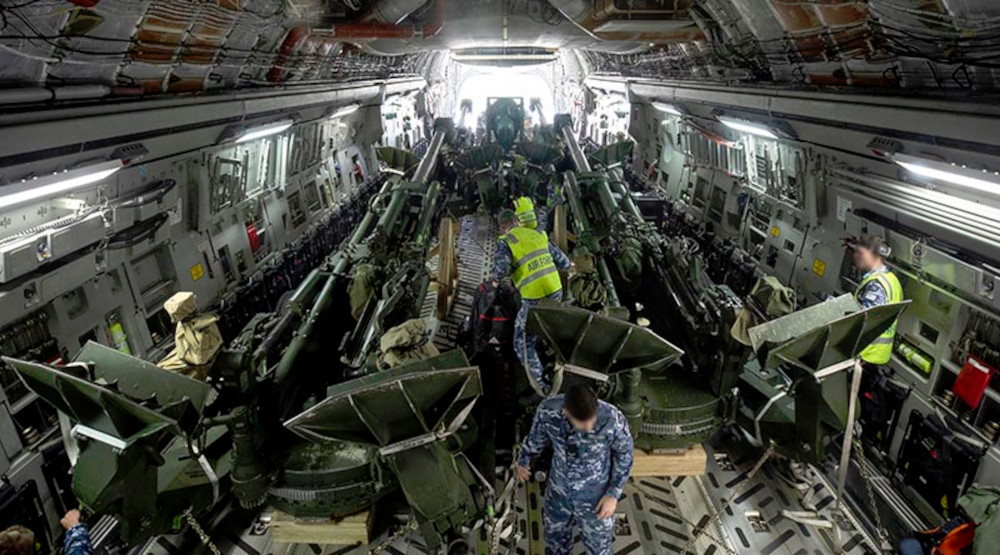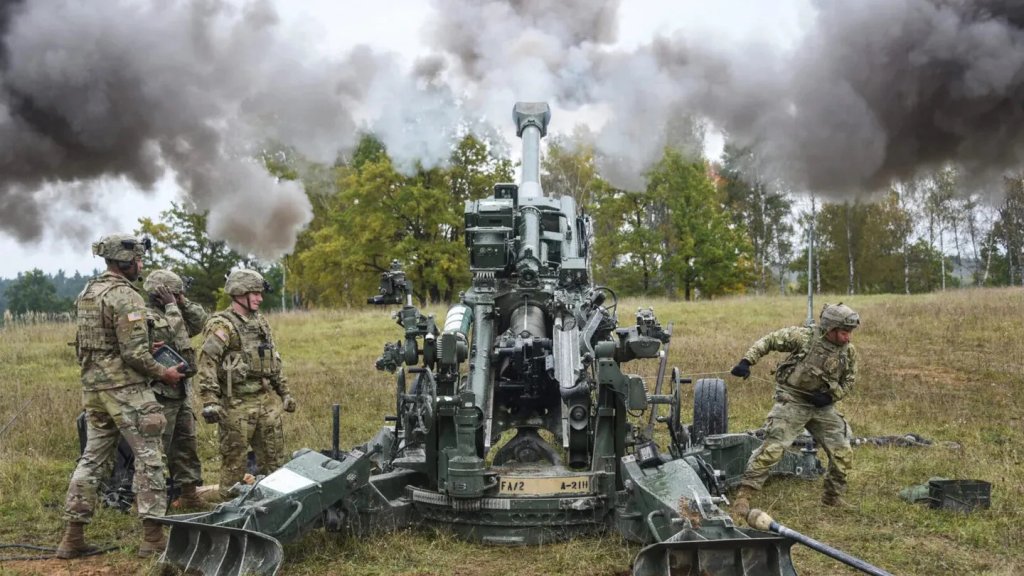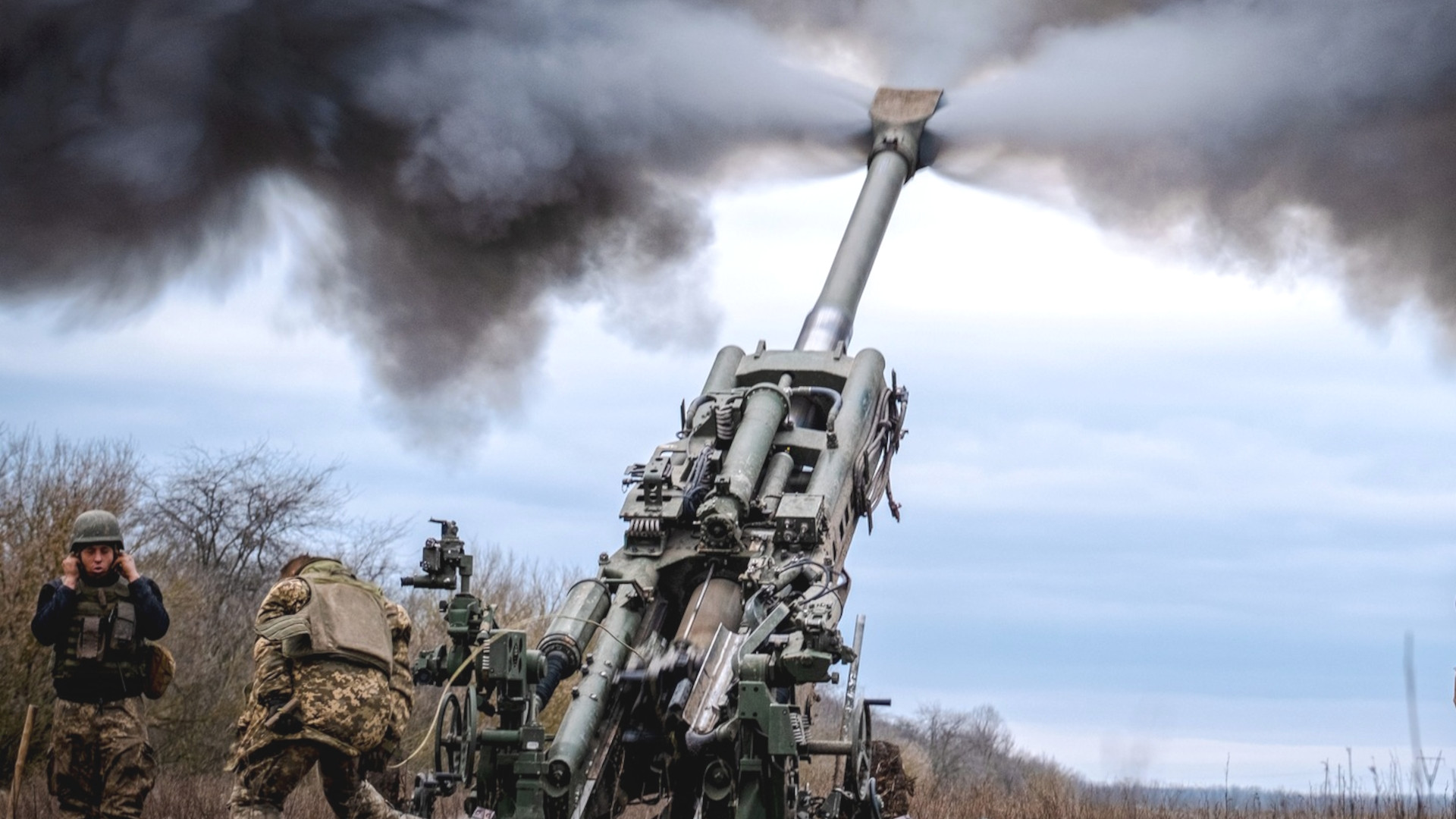The U.S. Army is moving to establish a second production source for barrels for 155mm M777 towed howitzers in response to what it calls “unprecedented demand” from Ukraine. Only one U.S. government-owned and operated arsenal makes the barrels and that facility cannot currently meet a requirement to churn out more than 30 new ones each month.
Discussion of the need for more barrels for M777 howitzers was included in a recently released Pentagon budget document dated Dec. 17, 2024, which details several so-called reprogramming actions related to U.S. military assistance to Ukraine. The M777’s barrel, or “cannon,” technically has its own separate designation, M776. The U.S. military is required by law to get approval from Congress to reallocate funding from one part of its budget to another.

The full entry regarding the M777 barrels reads:
“Funds are required for 155mm cannon tube second source in support of Ukraine. Includes procurement, factory improvements, production equipment and tooling, etc. in direct support of replenishment items provided to Ukraine. The high volume of artillery fire missions has created an unprecedented demand for M776 155mm Cannon Tubes (39 caliber), with a projected requirement of over 30 tubes per month. The current manufacturer of cannons, Watervliet Arsenal (WVA) [in New York state], a Government Owned Government Operated (GOGO) facility, has not been able to support the demand. Facilitization investment will support up to 10 cannon tubes per month, including large cannon calibers. This is a congressional special interest item. This is an emergency budget requirement.”

The reprogramming document shows that $161 million was reallocated to the Army for this effort from a dedicated Ukraine Replacement Transfer Fund within the Pentagon’s budget.
The lifespan of a barrel for any howitzer depends on a variety of factors, including firing rates. The barrels do wear out, and degradation of the rifling and overall internal structure can lead to reduced range and accuracy, as well as the potential for catastrophic failure. Firing a high volume of rounds, especially with full propellant charges to get maximum range, in a relatively short amount of time can only increase the wear rate. The U.S. Marine Corps notably highlighted having “burned out” the barrels on two of their M777s during fighting against ISIS in the Syrian city of Raqqa in 2017. The U.S. Army’s metrics for determining when the cannon on an M777 needs to be replaced are not publicly available.
It is unclear how many M777s Ukraine has received from the U.S. military and other sources since Russia launched its all-out invasion in February 2022. A Pentagon factsheet put out in December simply says the United States has provided “more than 200 155mm howitzers,” which also includes variants of the self-propelled M109. The Ukrainian armed forces have received at least four more M777s from Canada and another six from Australia.

How many M777s are in active Ukrainian service today is also not clear. There is visual documentation of nearly 100 M777s being damaged or destroyed in Russian attacks, which may not reflect the complete total. Some damaged howitzers could have been put back into operation, as well.
It is no secret that howitzers, and 155mm types especially, have been critical in Ukraine’s ongoing fight against Russia. Issues around ensuring sufficient supplies of ammunition for those howitzers have drawn particular attention in the past year or so. The United States and several European countries have been working to dramatically step up production of those shells to help meet Ukrainian demands, as well as replenish their own stockpiles. Past Ukrainian pronouncements about the number of 155mm rounds required to meet its operational requirements – at times up to 3,000 per day – give a good sense of the rate at which the country’s forces have been firing shells from howitzers like the M777.
The Pentagon reprogramming document underscores how the matter of ammunition supplies is just one serious issue facing Ukrainian artillery units. This all also speaks to real issues that the U.S. military itself could be faced with in the future, especially high-end ones like a fight with China in the Pacific. If U.S. capacity to produce things like replacement barrels for M777s is insufficient to meet the needs of Ukraine’s armed forces, it is hard to see how it could respond to far greater demands from American forces during a major conflict.
Lessons being learned from the conflict in Ukraine, as well as current operations across the Middle East, have already been having significant impacts on thinking about how the U.S. military should structure its own arsenal, especially stockpiles of key munitions, and be prepared to replenish it going forward. American obligations to the Ukrainian military, as well as operational demands in the Middle East, have also prompted serious criticism about the adequacy of current stockpiles.
It’s also worth noting here that the Pentagon reprogramming document indicates that the U.S. Army’s planned investment in additional capacity to produce M777 barrels could also be used to make other large caliber “cannons” in the future. The Army has not ordered any new production M777s for itself since 2019 and has been going back and forth in recent years on the possibility of replacing them, as well as its 105mm M119 towed howitzers. The U.S. Marine Corps has also been dramatically down-sizing its inventory of M777s in favor of additional High Mobility Artillery Rocket Systems (HIMARS) and new ground-based missile launchers as part of a larger restructuring effort.

When it comes to Ukraine, there is also now great uncertainty over the future of U.S. military assistance under President Donald Trump. Among a flurry of executive orders Trump has signed within the first 24 hours of assuming office is one putting a complete hold on all American foreign aid for the next 90 days pending individual reviews of those efforts. It’s not clear yet what the actual impacts of the order may be and it does include a provision for restarting the flow of aid sooner on a case-by-case basis. Trump has also been vocally in favor of a deal to end the conflict and has said he plans to meet with Russian President Vladimir Putin.
Putin “should make a deal. I think he’s destroying Russia by not making a deal,” Trump told reporters at the White House yesterday following his inauguration. “I mean, he’s grinding it out, but most people thought that war would have been over in about one week and now you’re into three years.”
Putin has expressed an openness to meeting with Trump, but there are no indications that the Kremlin has given up on its maximalist demands regarding Ukraine.
All of this also comes as Russia has been making battlefield gains, although ones assessed to have come at significant cost, in eastern Ukraine. Casualty rates on the Ukrainian side have also become increasingly worrisome, as highlighted by a recent scandal over reports that members of the Ukrainian Air Force, including important maintenance personnel, had been sent to fight as infantry on the front lines. Ukraine’s armed forces also just recently launched a new push inside Russia’s Kursk region, which has been partially occupied since last August. Artillery continues to be a key player on both sides on all of these fronts.
The U.S. Army, for its part, is now taking steps to ramp up production of barrels for M777 howitzers to meet requirements stemming from their unprecedented use in the ongoing conflict in Ukraine. This is also valuable additional industrial capacity that could be used to support other U.S. military requirements future.
Contact the author: joe@twz.com
